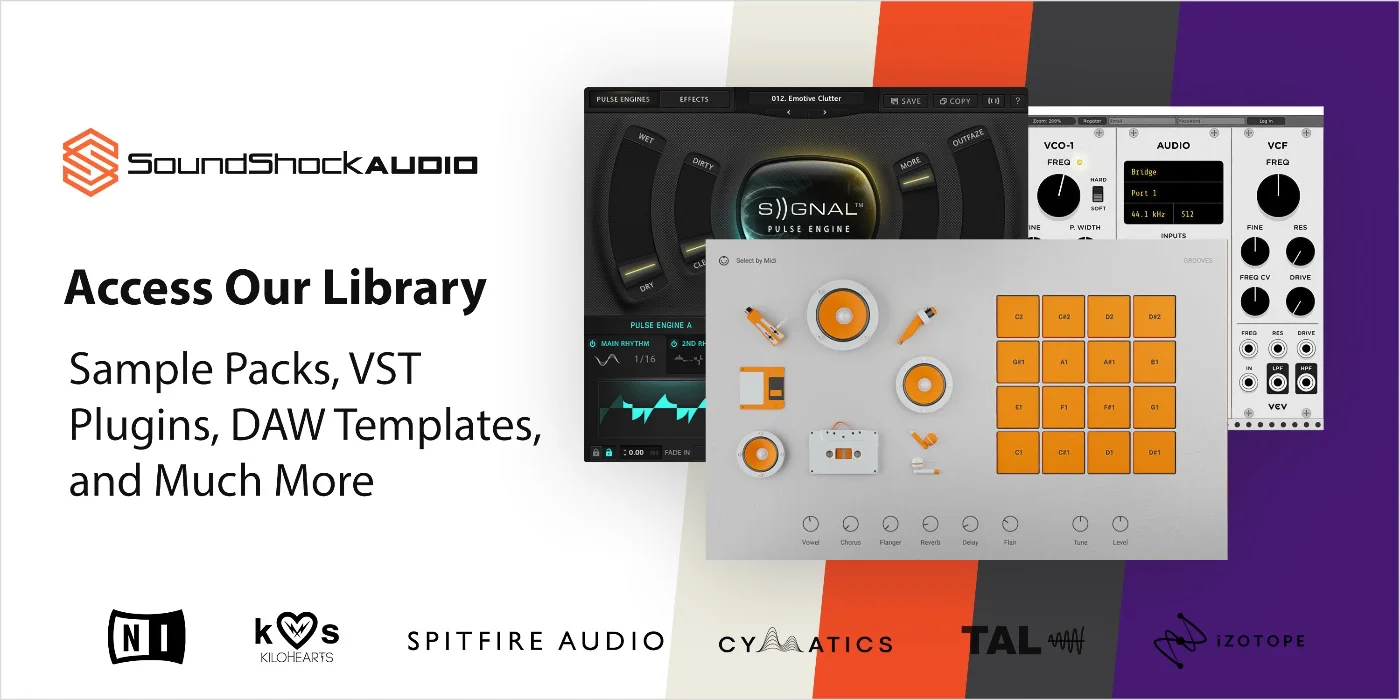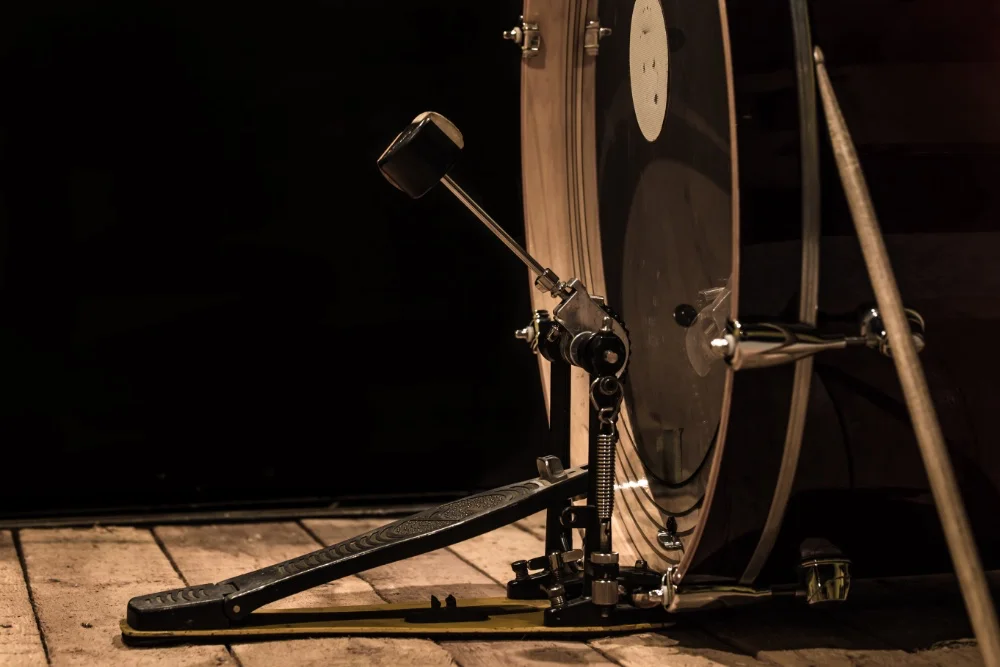As an audio engineer, getting the mix just right is essential for a great sounding track. But often times it can be difficult to get the kick and bass elements in particular working together effectively. This article will provide you with step-by-step guidance on how to EQ your kick and bass for maximum impact and clarity in your mixes.
EQing kick and bass correctly requires careful thought and attention to detail. It’s not something that can be done quickly or haphazardly; rather, each instrument should be treated individually according to its own characteristics. In this guide I’ll break down specific techniques for shaping both the kick and bass so they work together harmoniously while still maintaining their individual character.
Finally, I’ll demonstrate exactly how these changes sound when applied in context with a full mix – giving you a better understanding of what needs to happen at every stage of the process. So let’s dive into learning how to EQ kick & bass for maximum impact!
Definition Of Eq And Its Benefits
Who would have thought the very thing we take for granted, equalization (EQ), is essential in achieving sonic clarity and dynamic range? EQ allows us to shape sound frequencies within a frequency range that ultimately produces the desired effect. By using this technique, audio engineers/mixing engineers/sound engineers are able to bring out specific elements of an instrument or voice without affecting other parts of the mix.
The importance of utilizing EQ correctly cannot be understated – it can make all the difference between a good mix and a great one! With careful analysis and experimentation, we can find just the right balance between each individual element so they work together harmoniously. Now let’s move on to identifying the differences between kick and bass.
Identifying The Differences Between Kick And Bass
When mixing a track, it’s essential to identify the differences between kick and bass frequencies. A comparison of their sonic characteristics is key for achieving maximum impact in your mix. To analyze both elements effectively, let’s take a closer look at how they contrast.
Kick drums produce low-end fundamental tones with high mid-range attack. This allows them to cut through other instruments in the frequency spectrum. On the flip side, bass frequencies are generally lower than kicks but provide more body and sustain – enhancing the overall energy of a song without competing with higher frequencies. The distinction between these two elements can be difficult to discern when listening on its own – however, when combined together, you begin to understand how vital each component is within an arrangement. It’s important to recognize this dynamic relationship prior to setting up your equipment.
Setting Up Your Equipment
It’s time to get started, and what better way than by setting up all the necessary equipment for a successful mix? You’ll need an audio interface, studio monitors, microphone and cables. Everything is ready to go; now let’s make some noise!
But wait…not so fast. Before you can begin your journey of sonic exploration, it’s important to take the time to properly calibrate your gear. This process involves connecting each device correctly and adjusting levels within the software or hardware accordingly. It may seem tedious at first but as any experienced engineer knows, this crucial step ensures that everything sounds just right in the end. Once this task is complete you can finally unleash your creativity and start crafting kick & bass sounds with maximum impact.
Techniques For Enhancing Kick And Bass Sounds
When it comes to kick and bass EQ, there are a few key techniques that can be used to achieve maximum impact. Firstly, it’s important to know how to use your mix monitoring capabilities correctly. By listening closely with headphones or studio monitors and analyzing the frequencies of both the kick-drum and bass sounds, you’ll have an easier time identifying which areas need boosting, cutting or even removing entirely.
Next up is applying these EQ changes appropriately. Kick drums typically benefit from some low frequency boost in order to give them more overall punch and power, as well as high frequency cut for clarity and definition. Bass instruments also benefit from a slight boost in the lower end frequencies as this will help create depth within the mix – although caution should be taken not to overdo it here! Finally, don’t forget about mid range enhancement; adding subtle boosts around 500Hz can add warmth and character without overpowering other elements in the track.
By understanding how different frequencies interact with one another and utilizing effective equalization techniques on kick drums and bass instruments accordingly, you’re sure to get great results when mixing for maximum impact!
Mixing To Achieve Maximum Impact
Now that we’ve discussed techniques for enhancing kick and bass sounds, it’s time to explore how to mix these elements together for maximum impact. While some may think the process of mixing is a simple one, there are numerous eq techniques which must be employed in order to achieve optimal results.
In order to create an effective mix of kick and bass sounds, you’ll need to identify their respective frequencies. Kick drums typically occupy low-end frequencies while bass guitar occupies mid-to-high end ones. EQing each sound separately will help you better understand how they interact with one another and alter them accordingly. You should also use compression on both instruments as this helps retain clarity while creating more dynamic mixes. Additionally, experiment with panning – spread out your sounds so they don’t compete against each other yet still maintain a powerful presence within the track.
By following these steps you can ensure that your kick and bass tracks have maximum impact when mixed together! Now let’s take a look at tips to avoid muddiness when crafting your song…
Tips To Avoid Muddiness
When mixing kick and bass, it’s important to make sure your mix isn’t muddy. Here are some tips for clarity:
- Reducing low-end frequencies helps minimize rumble that can bury the mid-range details between the two instruments.
- Filtering out unnecessary frequencies can help achieve a tighter sound, allowing each instrument their own space in the mix.
- Automating gains is another way of getting more clarity from the kick and bass when needed in certain parts of the track.
- Panning one or both instruments away from center will create room between them as well.
- Adding an exciter plugin on just the kick and/or bass can also add presence without sacrificing headroom.
These techniques should be applied with care to ensure you don’t lose too much energy in the process, but if done right they’ll give you greater control over your mix and help keep it clear and focused. With these methods, you shouldn’t have any trouble avoiding muddiness while still achieving impactful results from your kick & bass combo.
Tools To Help Monitor Your Mix
Now that you’ve got the muddiness out of your mix, it’s time to take a closer look at how to monitor and shape your sound. To ensure maximum impact from kick & bass, utilizing mixer software, audio monitoring tools and EQ analyzers are key.
Put simply, these pieces of equipment allow you to make small tweaks until both instruments sit perfectly in the track. It also allows for dynamic processing; using frequency shaper plugins to really get into minute details such as finding resonances or frequencies that need cutting back on. This helps keep clarity in the overall mix while allowing each instrument its own space.
The importance of having these tools can not be overstated – they make the difference between an amateurish sounding mix and something truly professional-sounding. With them one can create a powerful balance between kick & bass that stands out amongst all other mixes!
Frequently Asked Questions
What Are The Best Eq Settings For Kick And Bass?
When it comes to mixing, one of the important elements is equalization (EQ). The EQ settings for kick and bass can drastically alter the sound. To get a fuller kick and bass that has maximum impact, there are several frequency ranges which should be adjusted.
The low-end frequencies of both instruments will need to be addressed in order to have a full mix. For kicks, this means boosting around 80Hz – 150 Hz with a narrow Q setting; while for bass, this would mean boosting at 40 Hz – 100 Hz with a wide Q setting. While you boost these frequencies, make sure not to push them too hard as this could result in a muddy sounding mix. When adjusting mids on each instrument, use cuts rather than boosts and keep your changes small so they don’t overpower the other elements in the track.
For best results when it comes to EQing kick and bass together, always listen carefully for how much headroom is available between the two tracks before making any adjustments. Pay attention to where each element sits within its own frequency range but also how balanced they are against each other. It’s worth experimenting by turning up different parts of their respective EQ curves until you find what works best for your track without sacrificing clarity or punchyness.
What Type Of Eq Should I Use For Kick And Bass?
With the right mix of EQ, kick and bass can have maximum impact in any music production. But what type of EQ should you be using? According to a recent survey, only 10% of audio engineers know how to set up optimal EQ settings for both elements. That’s why it’s essential to understand the different types of EQ available so that you can achieve high quality results with your mixes.
When dealing with low-end frequencies like those produced by kick and bass instruments, short parametric equalizers are usually the most effective choice. These give you more precise control over individual frequency bands compared to other EQs such as graphic or shelf filters. You’ll want to make sure you’re boosting or cutting key frequencies based on their musical relationships rather than just randomly increasing gain levels until something sounds good – this will help create a balanced sound between the two components.
If you don’t already have an understanding of frequency ranges and how they interact with one another, then it might be wise to do some research first before tackling the process of selecting which type of eq is best suited for kick and bass. The general rule of thumb is that mid-range frequencies (around 200 Hz – 4 kHz) are where most traditional 808 kicks live while bass tones tend to inhabit lower areas around 50 Hz – 250 Hz. By gaining knowledge about these ranges, you’ll be able to better identify which exact frequencies need adjustment when mixing them together – resulting in a punchy yet well blended combination overall.
How Can I Make My Kick And Bass Sound Fuller?
If you want to make your kick and bass sound fuller, there are several techniques you can use. First of all, it’s important to boost the low-end frequency range on both instruments in order to get a boomy kick and deep bass. This will create extra resonance that adds depth and dimension to your mix. Secondly, you should experiment with adding some mid-range frequencies for clarity and crispness. Finally, if you’re still not happy with the results, try using EQ automation or compression plugins to really fine tune your kick and bass sound.
These simple tweaks can help give your track a full, powerful bottom end without compromising its overall dynamics. By carefully boosting the right frequencies at the right levels, you can achieve greater impact from your kick and bass sounds while maintaining sonic balance throughout your mix. With these tips in mind, you’ll be able to quickly craft a richer sounding low-end blanket for any kind of music production!
At What Frequencies Should I Eq My Kick And Bass?
Are you an aspiring audio engineer with a dream to make your kick and bass sound fuller? We’ve all been there. I mean, who hasn’t gone through the frustrating process of trying to EQ their kick and bass for maximum impact? Well, if that’s what you’re looking for then look no further!
At what frequencies should you be eq-ing your kick and bass? That’s a great question – one we get asked quite often in this line of work. The key is finding the right balance between both instruments; too much emphasis on either one can produce muddy or lopsided results. A good starting point is to set the kick frequency around 80-120Hz and the bass at around 30-60 Hz. This will provide enough low end punch without stepping on each other’s toes. You may also want to boost some mid-range frequencies (around 500-800 Hz) as well, depending on how much body you need from each instrument. With these basic settings adjusted properly, your mix should have plenty of impact while still sounding full and balanced.
As any experienced audio engineer knows, it takes more than just proper EQing to create a powerful mix. However, having solid fundamentals like knowing when and where to apply equalization goes a long way towards enhancing your overall sound quality. So don’t let those pesky kick and bass frequencies trip up your mixing aspirations again – take control of them today with some thoughtful EQ adjustments!
How Do I Keep Kick And Bass From Competing With Other Instruments?
When mixing a track, one of the most important tasks is preventing kick and bass from competing with other instruments. This process can be known as frequency masking or sound masking. It’s essential that sounds don’t interfere with each other in order to achieve an even mix across all frequencies.
The first step when attempting to avoid masking between kick and bass is understanding their respective roles within the song. Kick drums provide power and punch while bass lines add depth and solidity. Both need to make sure they are not conflicting with one another. To do this successfully, you’ll want to focus on where each instrument occupies its own space by equalising both so that any competing frequencies are eliminated before you start mixing them together.
Using EQs correctly will help keep your mix balanced; for example, if the kick sits too low in the mix it could end up getting masked out by the bass line, resulting in a muddy sounding mix overall. On the other hand, if your kick drum has too much mid-range presence it may overpower your entire low-end spectrum which would make it difficult for your sub frequencies (the lowest octave) to stand out – something that must be avoided at all costs! So take time to carefully adjust your EQ settings until everything feels just right and neither element dominates over the other.
Conclusion
As a final thought, I’ll leave you with this: when it comes to EQ-ing kick and bass for maximum impact, the key is all in the details. Taking the time to carefully craft your sound can make all the difference between a track that just sits there and one that truly stands out — so don’t be afraid to experiment!
By taking into account the type of EQ used, as well as both frequency content and dynamics of each instrument, we can ensure our mix is balanced while also creating space for other elements. This way, our kick and bass won’t compete with any other instruments in the mix but will instead enhance them. As an audio engineer, it’s my job to create a pleasing sonic landscape — let’s take advantage of these tools and make something great!
Most importantly though, never forget: trust your ears above all else. Only through experimentation can you really get to know how different sounds interact with each other. Have fun exploring new sounds; you may surprise yourself with what you come up with!
Save Money with Free Music Production Tools!

Why spend hundreds or even thousands of dollars on music production tools when you can access them all for a low monthly fee at SoundShockAudio? Subscribe now and start creating professional-sounding music without breaking the bank. We’ve got everything from sample packs, to VST plugins, and more.
Need more help when it comes to EQing? Check out the article, how to eq piano fl studio.
Also check out this other article how to eq on fl studio, for more EQing tips.




